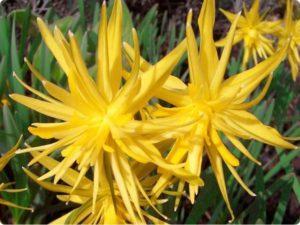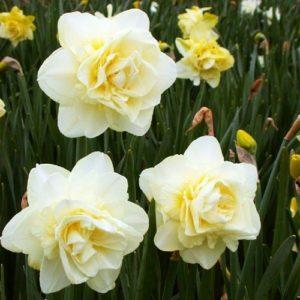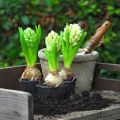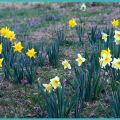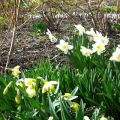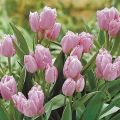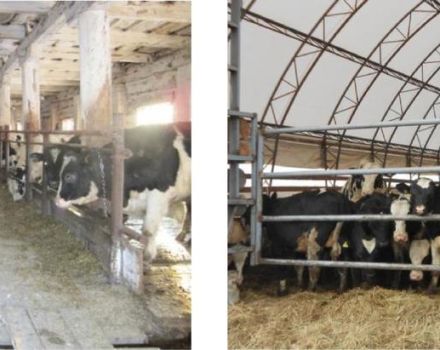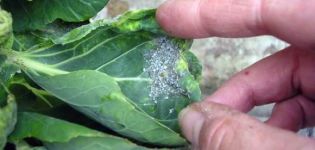Description of the subspecies of the Chirfullnes daffodil variety, planting and care rules
The Chirfulness daffodil has many advantages in its characteristics. Flowers are unpretentious, their cultivation is possible on any land. In order for an ornamental plant to please with its unusual flowering and pleasant aroma, you should plant it correctly. Care consists in timely watering, the introduction of nutrients and the obligatory shelter for the winter.
Flower description
Garden daffodils belong to the Amaryllis family. There are more than 60 species of this ornamental plant. The Chirfulness variety belongs to the terry types of narcissus:
- The stem grows up to 46 cm in height.
- Several flowers form on one sturdy stem.
- Flowering begins in late April and lasts for three weeks.
- After flowering, the greens stand for another month and die off by mid-July.
- A bulb remains in the soil, which continues to accumulate nutrients for further development.
The daffodil bulb is capable of withstanding drought and frost, but in cold regions requires additional shelter for the winter.
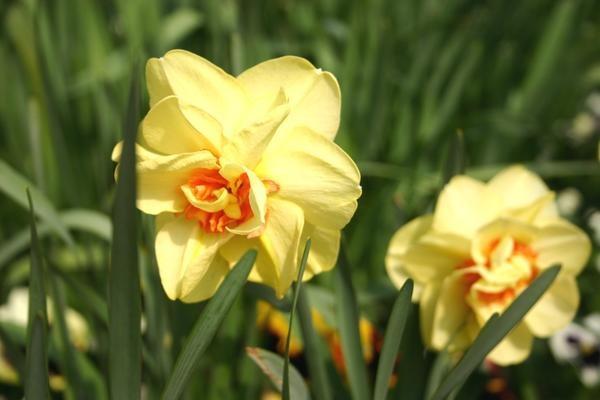
What does it look like?
The diameter of each flower reaches 8 cm. The outer petals are large, oblong-elongated. The inner petals are smaller, their edges curl outward.
White subspecies
Narcissus White Cheerfulness Characteristics:
- several lace flowers are formed on one stem up to 40 cm high;
- inflorescences of a white subspecies of daffodil variety Chirfulness are large, up to 6 cm in diameter;
- petals are white, the core is yellow;
- inner petals resemble the bud of an unblown rose;
- a pleasant, musky aroma that is perceptible at a great distance.

Yellow subspecies
Daffodil Yellow Cheerfulness has the following characteristics:
- double flowers are painted pale yellow;
- outer petals are large, bloom in different directions;
- inner petals are smaller, remain folded in the center;
- diameter of inflorescences 6 cm;
- on one strong peduncle there are from two to five flowers;
- flowering begins in late April and lasts for three weeks.
Plant features
Terry daffodil Chirfulness has established itself from the best side:
- withstands frosts and short-term lack of moisture;
- the flower is resistant to many diseases;
- the plant is unpretentious to the composition of the soil, the main thing is that it is well drained and not characterized by high acidity.
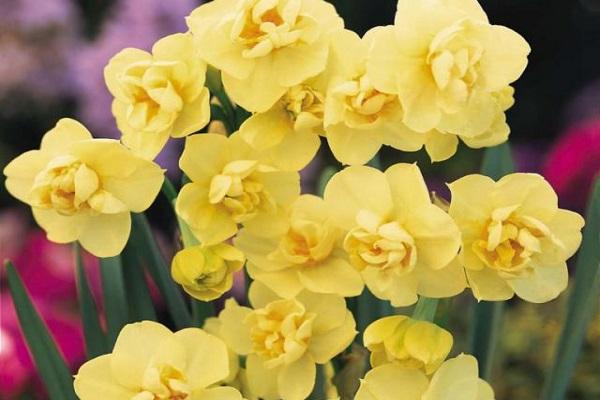
Specificity of care
Daffodils are unpretentious plants, but you should still follow some rules:
- regular watering is required;
- regular loosening of the soil and weeding from weeds;
- introduction of additional fertilizers;
- shelter for the winter with dry leaves, straw or pine branches.
Landing
Any land plot is suitable for planting. But if you plant it on a flat place that is well lit, the plant will increase its resistance to infections and form a lush flowering.
A loamy soil composition with a high content of humus and neutral acidity is better suited. Groundwater should not flow close to the soil surface.
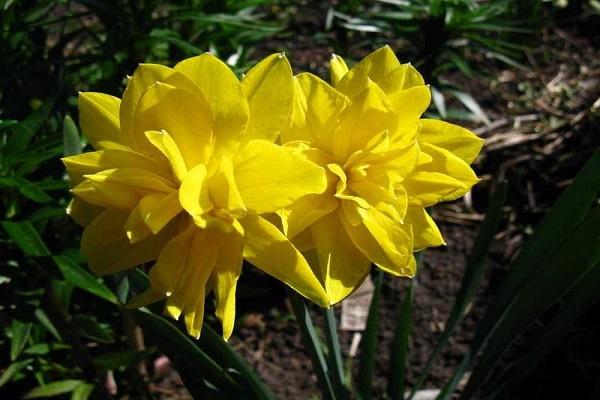
Planting is done in the last days of August or at the beginning of September:
- dig holes at a distance of 11 cm and a depth of 15 cm;
- river sand is poured onto the bottom to improve the drainage properties of the soil;
- an onion is laid in each hole and covered with earth;
- then the ground is mulched with sawdust, straw (the thickness of the mulch is 3.5 cm).
It takes two weeks to root the bulbs. Therefore, the planted bulbs later than the recommended dates, but before the onset of frost, will survive. In this case, flowering can begin in a season. Planting bulbs can be carried out in the spring, but they are previously kept in the refrigerator for two months.
Daffodils can grow in the same place for more than 10 years. But since the soil is quickly depleted, the change of place is carried out more often.
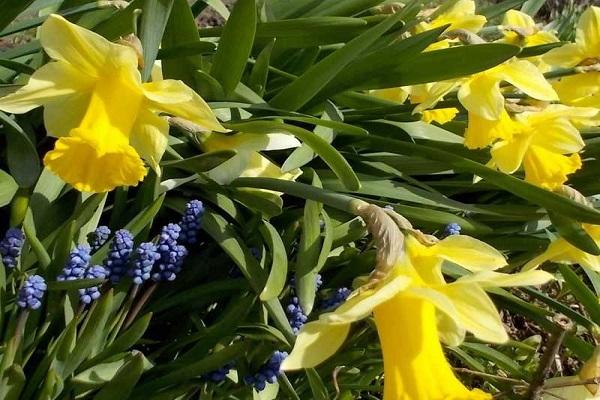
Forcing flowers
Flowers can be grown not only in the summer cottage, but also at home. Off-season flowering is easy to get. If you follow the rules, then a plentiful cut of the bouquet variety Chirfulness begins from the beginning of winter.
To get flowers in December, the bulbs are dug up two weeks earlier than usual. Cut daffodils are recommended to be grown in boxes or on greenhouse beds:
- The largest and healthiest specimens are selected from the dug out bulbs. Suitable for bulbs weighing up to 92 g with two or three peaks.
- The first time the planting material should be stored at a temperature of +18 degrees, then the temperature is gradually reduced to 8 degrees.
- Before planting, the bulbs are disinfected with a solution of potassium permanganate, they can be soaked in a solution with Fitosporin or Trichodermin.
- Additionally, the bulbs are treated with growth stimulants ("Epin", "Zircon").
In early October, the bulbs are planted in prepared soil. In November, they are covered with foil. A month before the beginning of flowering, the plant is transferred to a well-lit place where the air temperature is around +17 degrees. Watering is carried out at this time every day.

Fertilizer
The first feeding with mineral compounds is carried out in early spring. While loosening the soil, ammonium nitrate, superphosphate and potassium salt are added. The second feeding is recommended during the period of bud formation.
If at the time of planting rainy weather is established, then nitrogenous components are introduced (nitrophoska is suitable). Fertilizers are applied in the spring, after the snow has melted.
Post-flowering care
After the end of the flowering period, Chirfulness daffodils need frequent watering. The bulb will accumulate moisture, which is necessary for the development of the future flower bud. It is recommended to water the flowers every 7 days.
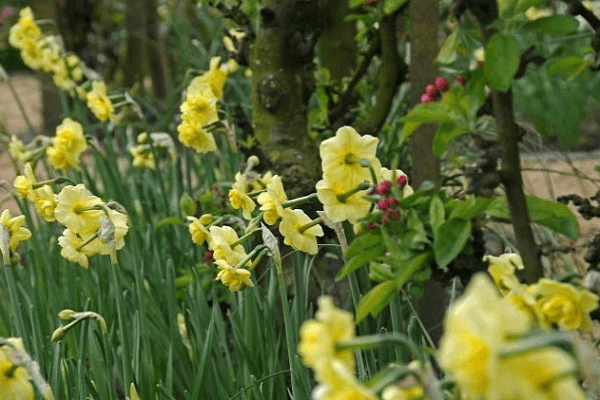
For the winter, the bulbs are sheltered from frost. The procedure begins after the subzero temperature is established. Litter peat is used as a covering material. The layer of insulation is removed only after the snow has completely melted.
Is the flower susceptible to disease?
The Chirfulness daffodil rarely gets sick and is attacked by pests. But if the planting rules and other agricultural techniques are not followed, then problems may appear:

- Fusarium is the most common.
- When planting in a wet area with heavy soil, there is a high likelihood of developing gray rot.The disease is also provoked by cold weather, excess nitrogen or lack of potassium.
- Another common disease is penicillus rot.
The danger to daffodils is posed by such pests as daffodil fly, root mite, wireworm, moth caterpillar, nematodes.
Before flowering, preventive treatment is carried out with suitable insecticides (be sure to observe the dosage). After flowering, daffodils are treated with copper sulfate or a preparation such as "Hom".
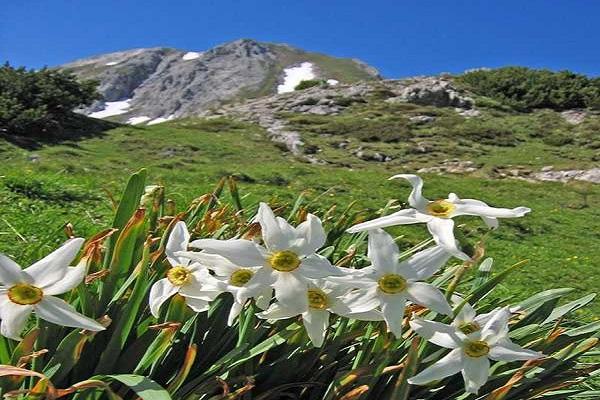
Possible growing problems
Narcissus Chirfulness tolerates frosts in winter down to -17 degrees. If the temperature drops below or there is little snow, then additional cover for the bulbs or their complete digging out of the ground is required. Straw, pine or spruce branches are used as shelter.
The flower does not have special requirements for fertilizers. In the case when the growth of the plant is slow, the leaves turn yellow and dry, the flowers are formed with a small diameter, these may be signs of a deficiency of trace elements.

Use in landscape design
Chirfullens daffodil has an unusual, large inflorescence and pleasant aroma. There are many options for choosing where to plant daffodil bulbs:
- effective planting in perennial flower beds;
- the flower in the lawn looks great along with other types of spring flowers;
- you can plant a plant along curbs or a fence;
- decorate the yard with hanging pots and pots;
- growing in flower pots in an apartment is common;
- flowers in alpine slides look beautiful.
Daffodils look good when paired with tulips, hyacinths and other perennial flowers and shrubs.
